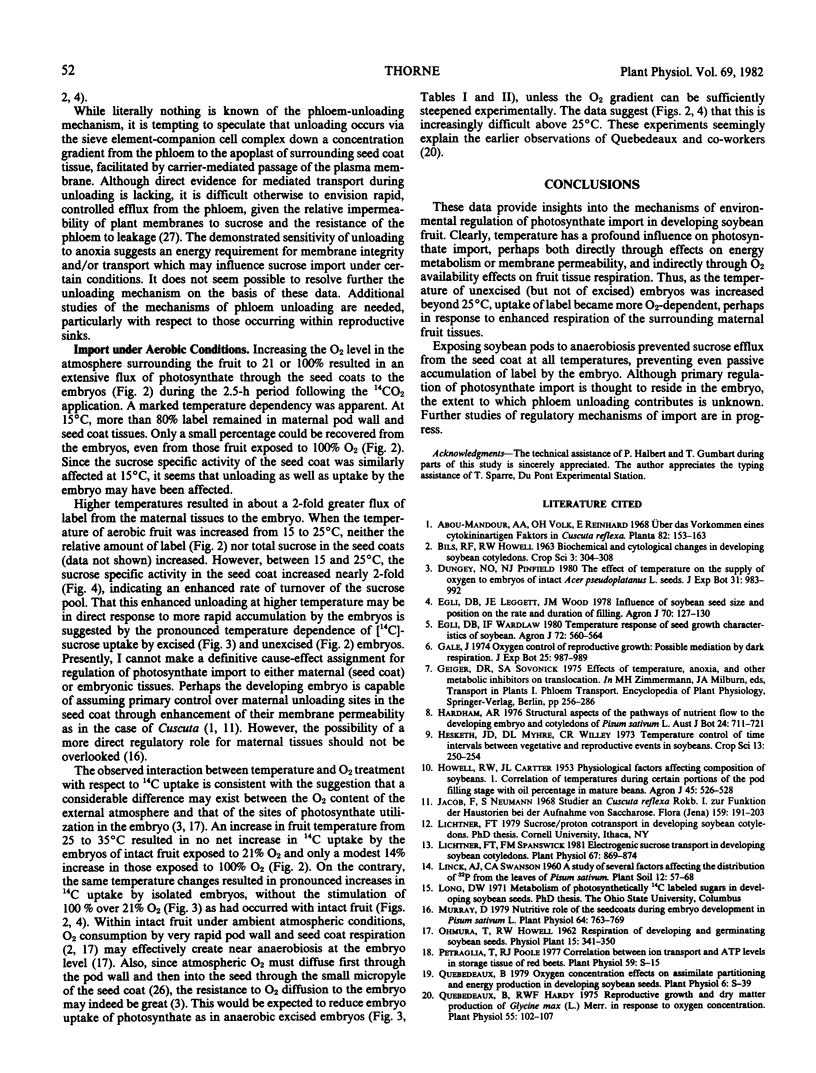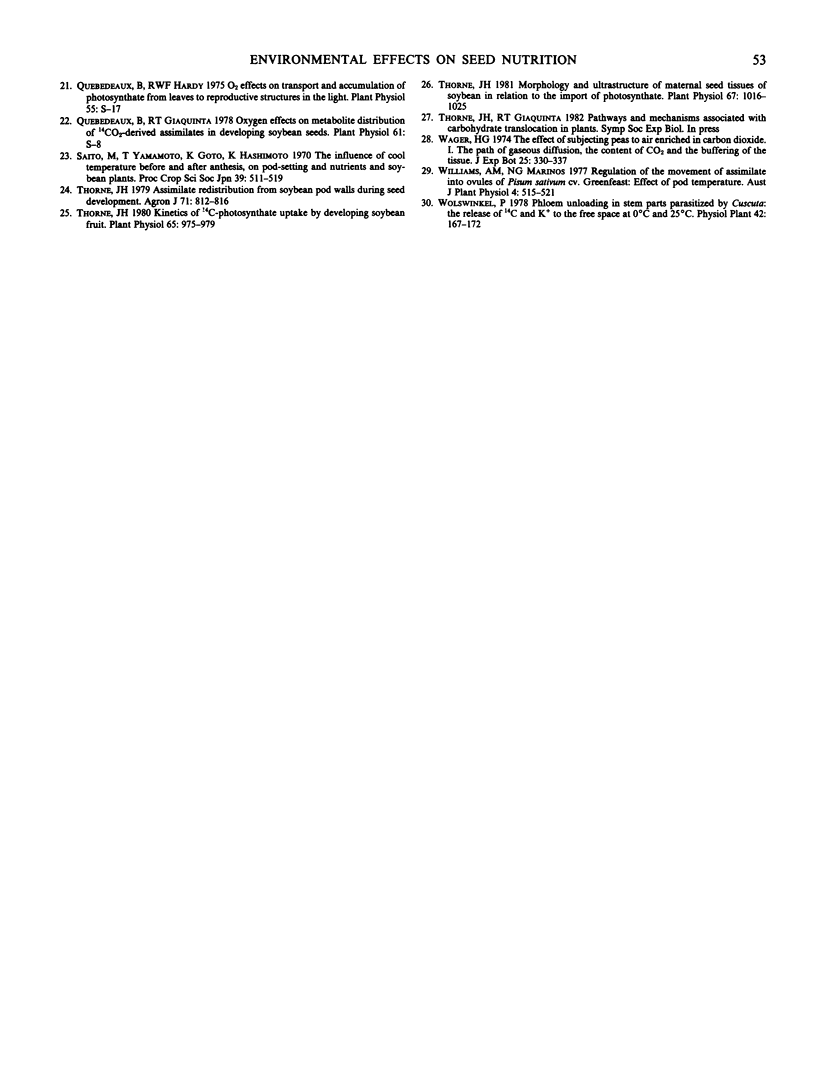Abstract
The environmental sensitivity of the processes associated with the import of photosynthate by developing soybean seeds was investigated within intact fruit and with excised, immature embryos. Intact pods of field-grown (Glycine max [L.] Merr.) Amsoy 71 soybeans were subjected to localized regimes of 0, 21, or 100% O2 and 15, 25, or 35°C during pulsechase translocation experiments and, 2.5 hours later, the uptake and distribution of 14C-photosynthate among dissected fruit tissues determined. In other experiments, excised embryos were incubated in [14C]sucrose solutions under various experimental conditions to separate the effects of these treatments on accumulation by the embryos from those which may operate on phloem unloading in the maternal seedcoat.
Import of 14C-photosynthate by intact soybean fruit was both temperature- and O2-dependent. This dependency was shown to occur only within the seeds; import by the pod walls was essentially insensitive to fruit temperature or O2 treatments. The embryos of anaerobic fruit were completely unlabeled, regardless of fruit temperature. But under anaerobic in vitro incubation conditions, uptake of [14C]sucrose in excised embryos was only 30% less than that in aerobic in vitro conditions. The data suggest that, within intact fruit, anoxia prevented sucrose efflux from the seed coat phloem and any subsequent uptake by the embryo. The demonstrated energy dependence of phloem unloading may reflect requirements for membrane integrity or energy metabolism in the companion cell-sieve element complex, consistent with a facilitated unloading process.
Collectively, these data characterize the environmental sensitivity of photosynthate import in developing soybean fruit. They imply that environmental regulation of import may occur at both the embryo level and at the phloem terminals within the seed coat.
Full text
PDF





Selected References
These references are in PubMed. This may not be the complete list of references from this article.
- Lichtner F. T., Spanswick R. M. Electrogenic sucrose transport in developing soybean cotyledons. Plant Physiol. 1981 Apr;67(4):869–874. doi: 10.1104/pp.67.4.869. [DOI] [PMC free article] [PubMed] [Google Scholar]
- Murray D. R. Nutritive Role of the Seedcoats during Embryo Development in Pisum sativum L. Plant Physiol. 1979 Nov;64(5):763–769. doi: 10.1104/pp.64.5.763. [DOI] [PMC free article] [PubMed] [Google Scholar]
- Quebedeaux B., Hardy R. W. Reproductive Growth and Dry Matter Production of Glycine max (L.) Merr. in Response to Oxygen Concentration. Plant Physiol. 1975 Jan;55(1):102–107. doi: 10.1104/pp.55.1.102. [DOI] [PMC free article] [PubMed] [Google Scholar]
- Thorne J. H. Morphology and ultrastructure of maternal seed tissues of soybean in relation to the import of photosynthate. Plant Physiol. 1981 May;67(5):1016–1025. doi: 10.1104/pp.67.5.1016. [DOI] [PMC free article] [PubMed] [Google Scholar]


